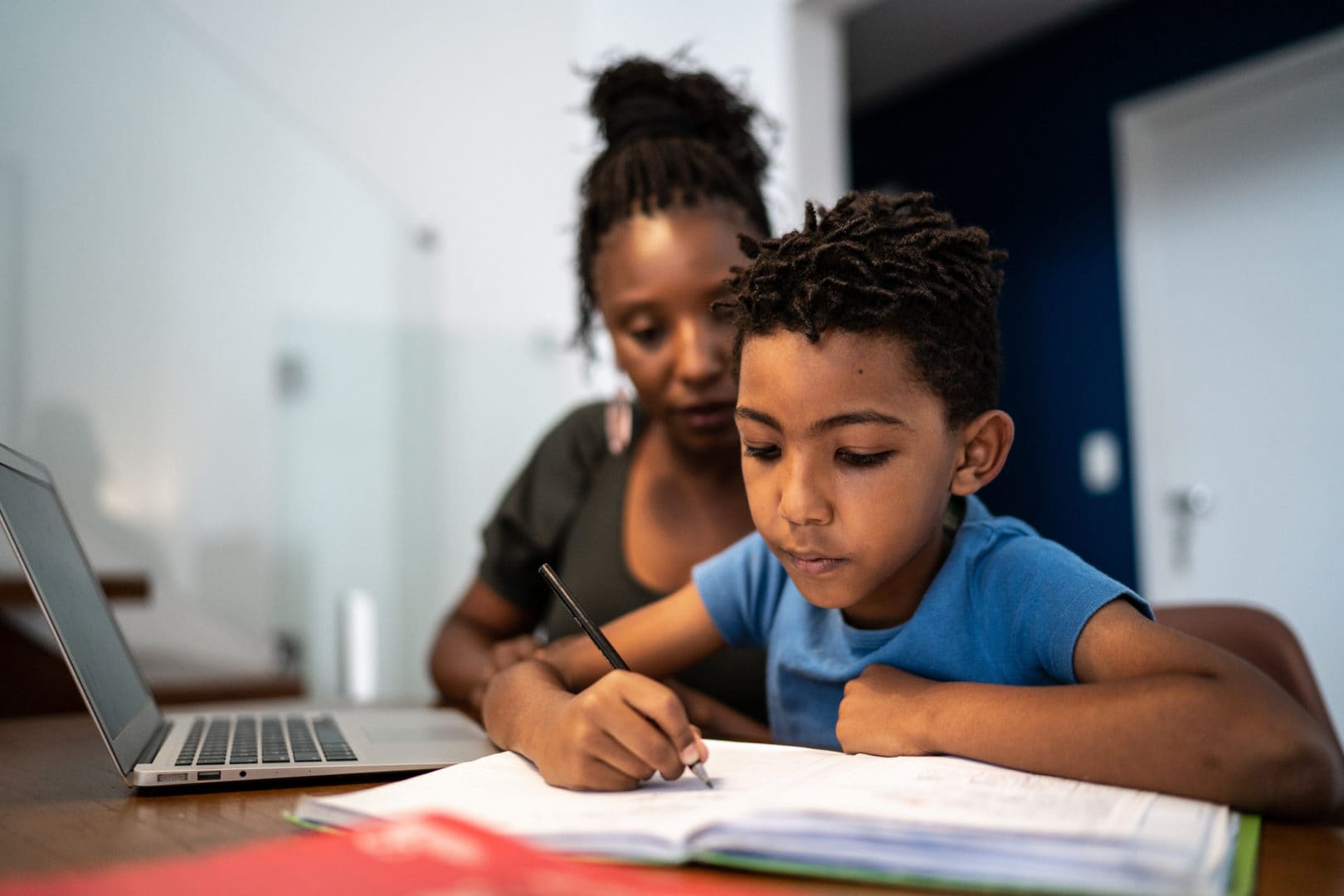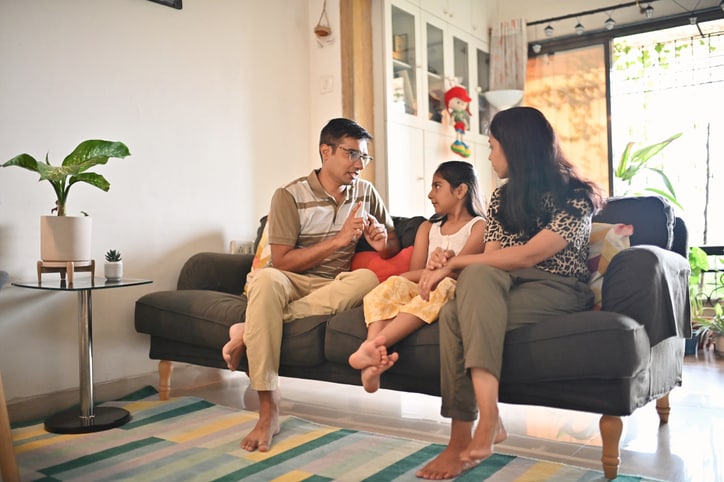When schools first closed last March, kids faced what had once been unthinkable: full-time remote classes. Now, the complexities of juggling multiple on-screen classes and independent learning is the norm for many students this year. “We’re in it for the long haul,” says Bobbi Wegner, a clinical psychologist in the Boston area and a lecturer at the Harvard Graduate School of Education. “It was easier to deal with in the spring because it felt short term, but now parents need to ask, ‘What’s most important for my child?’”
To that point, academic success in remote learning, especially while we’re enduring a global pandemic, may look very different. “Our roles as parents and students have been disrupted,” says Avi Kaplan, professor of educational psychology at Temple University. “We need to be more compassionate and not have the same expectations and goals for achievement in the current situation.” Here are four priorities parents should keep in mind — plus four more to forget about — to make the most of remote learning.
What to focus on
“We need to broaden learning goals right now,” says Wegner, herself the mother of two boys and a girl, ages 7 to 11. “If, for instance, your kid can navigate remote lessons, is independent and has the ability to be flexible, that may be a huge win.” Prioritize the following activities to ensure your child’s continued socio-emotional and academic growth.
DO: Develop your child’s sense of competence
Competence is not about your child saying, “I can do this.” Instead, “It’s the step toward doing things by themselves,” says Kaplan. Whether your child is figuring out a math problem or drafting a writing assignment, he recommends observing closely to determine exactly where more structure or guidance is needed. “What you want to do is work on the places where the child can’t do things by themselves yet, but once they see they’ve done it with you, they think, ‘Maybe I might be able to do it myself’,” he explains.
Robin Reiter, a full-time physical therapist and mom in New York City, did exactly that when she observed her 8-year old son’s science classes. She started sitting down with him several times a week to provide guidance where there was limited remote instruction and a lot of difficult independent work to complete.
“More than ever, I am aware of what he is learning and where his strengths and weaknesses are,” she says. “Because he had a one-on-one with me for his whole first science unit, I feel like he actually learned more than he would have in the classroom.”
DO: Support their autonomy
“As a parent, you should be asking yourself, ‘How can I support my child’s exploration of interest in different activities and develop their knowledge about themselves and who they are right now?’” says Kaplan. That can be as simple as joining your child in any activity they find fun or exciting — school-related or not — and showing interest. “If your 10-year-old likes computer games, play with them and ask, ‘Why do you like playing?” Kaplan says. “It shows support for the child doing something that is meaningful for them and encourages a sense of self acceptance.”
DO: Encourage them to maintain relationships
Learning remotely means children miss out on the regular social interaction and interpersonal learning that the classroom provides. “We can still help them develop their relationship skills in a time when we’re distanced,” says Heather Schwartz, a learning specialist with CASEL, an organization that promotes social and emotional development in K-12 classrooms.
Simple acts of kindness like making a card for a front-line worker or someone who may feel alone can increase a child’s social and emotional capacity, Schwartz says. “It’s a fun activity, but it also helps your kid think about why we might reach out to that person right now. That builds empathy and helps them see others’ perspectives.”
Wegner recommends building in social activities in a way that’s feasible for your family situation. (Her own daughter likes walking around the house doing show-and-tell on FaceTime with friends.) “It’s super important to maintain some kind of social connection for your child but also to step out of the way,” says Wegner. “The goal is to let kids be kids, direct their own play and conversation and separate from you — which is hard when we are all together so much right now.”
DO: Reinforce their reading skills
Reading has always been fundamental, but now its benefits may be even greater. “There’s the idea that reading acts as a ‘mirror’ showing you things about yourself and as a ‘window’ into other people in the world,” says Schwartz. “Right now, those windows can be really impactful, helping kids make connections with people with a very different lived experience.”
Schwartz suggests asking questions that help kids draw connections as they read like, “If you were in the situation in the book, what would you have done and why?” and “What do you think is going to happen?” She explains that the exercise helps children develop a muscle of imagining who they might be in various situations. “Gaining that perspective can be powerful,” she says.
What not to worry about
While it may be difficult to let go, parents do need to understand that their own anxieties can have a huge impact on their child. “It’s extremely hard, but we need to step back and see how we can play the most supportive role for our kids,” Schwartz says. That will likely mean connecting early and often with your child’s teacher to manage expectations. To further maximize your child’s remote learning experience, here are four things to consider bumping down the list of priorities:
DON’T: Stress about their grades
If your child’s report card was once filled with As and Bs, be advised that the past may have little bearing on the present. “Kids have lost a lot of the boundaries and context that supported them in their role as students,” says Kaplan. For instance, even kindergarteners knew what would happen when they moved from the gym to the art room to their main classroom and their role in each setting. Their movements were organized to help them process expectations for where they were at each moment.
Now, kids are asked to do all of their learning and schoolwork at home, a place they associate with free time and hobbies. “That’s confusing,” says Kaplan, who advises telling children that you don’t expect them to do as well as they did before. “It is much more important to say that learning is important. Frankly, parents shouldn’t be putting much emphasis on grades right now.”
DON’T: Make them keep their emotions in check
Under normal circumstances, we’d expect our children to cope with the stressors of a school day without, say, kicking their chair. But the very nature of their daily lives has changed. “We’re experiencing trauma right now,” says Wegner. “Because there’s more anxiety, stress and irritability, our goals have to shift for ourselves and our children.”
So if your kid’s reacting badly to a Zoom malfunction, let them — but use the opportunity to empathize with them and validate their frustrations. “You can help kids name and understand their own emotions. Then put words to the feeling,” says Wegner. “Validate the emotion by saying: ‘That’s so annoying! It’s totally OK to feel that way because this is not a normal experience.’” Be sure to remind kids that while all emotions are OK, all behaviors are not.
DON’T: Expect them to master multiple complex concepts
When you’re mentally stressed, it’s hard to complete everyday tasks, much less higher-order thinking. “The emotional piece is number one,” says Wegner. “No matter how much we want to achieve academic goals, if they’re not in a position to take in the learning, it’s not going to happen.”
To that end, Kaplan recommends following a less-is-more approach: “Go more for depth of understanding of fewer concepts so that kids feel not that they need to be at a certain level, but that they have [basic] material down pat.”
While parents don’t have much control over a teacher’s lesson plans, they can clearly communicate how well their child is absorbing the material. “Teachers knew how to teach face-to-face,” says Kaplan. “They could see the child’s eyes and interactions so they knew whether they ‘got’ threshold concepts, like functions in math.” Online classes mean teachers may not have a clear view into whether kids actually understand fundamentals well enough to grasp more complex material.
DON’T: Force them to complete all their work on time, all the time
“We struggle with a perfectionistic, super-academic culture where parents think about kids writing the perfect college essay when they’re 10,” says Wegner. “This year, think about things as being ‘good enough.’ I even try to apply that approach to my own parenting now.”
So what does that look like? Parents need to agree with their child’s teacher about what makes sense in their particular circumstance. “Depending on the kid, that may just be showing up to class or doing three or four out of 10 problems,” says Wegner. “The key is to build mastery and self-efficacy in whatever way that is.”






